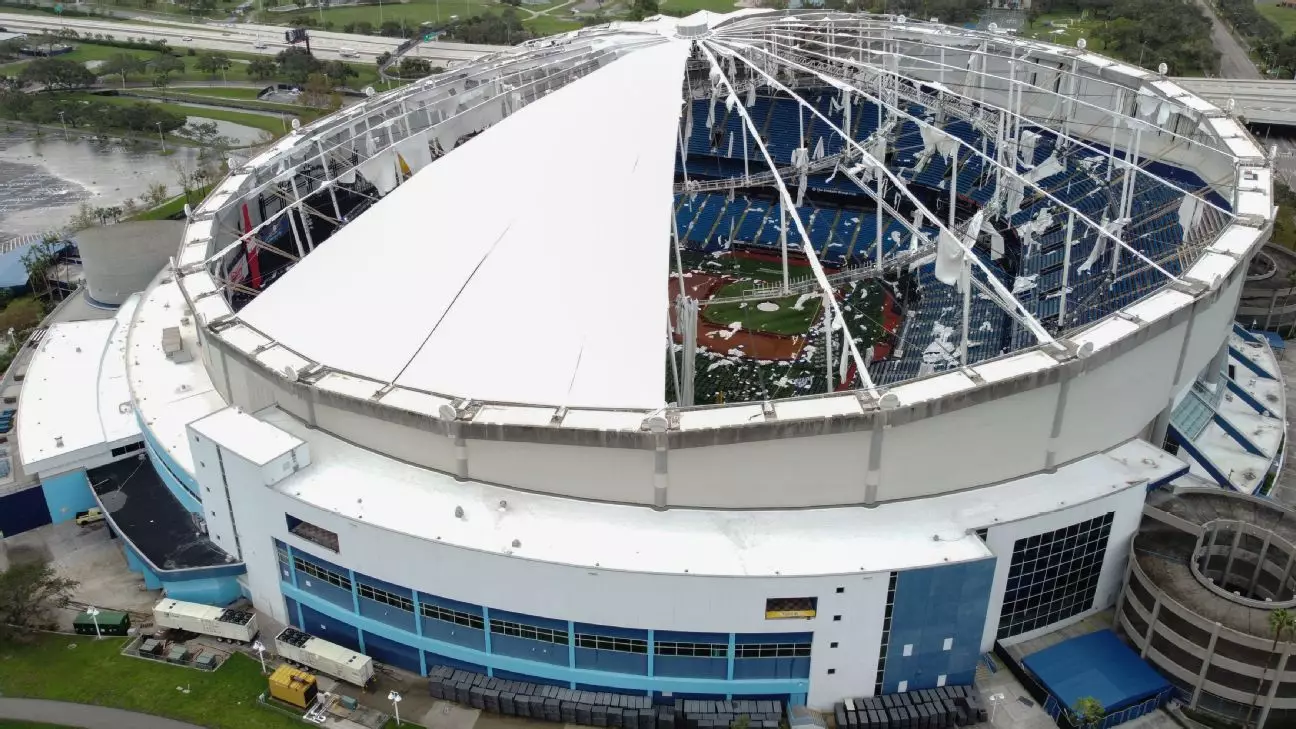The Tampa Bay Rays have recently pulled the brakes on what was to be a transformative $1.3 billion baseball stadium in St. Petersburg, a decision primarily influenced by unforeseen hurdles such as hurricanes and significant construction delays. Principal owner Stuart Sternberg’s announcement has sent ripples through the local sports community, highlighting the sometimes unpredictable nature of big city projects. His statement emphasized that the conclusion came after careful consideration of circumstances that were largely out of their control, including the impacts of Hurricane Milton, which wreaked havoc on the region and played a crucial role in the deterioration of Tropicana Field, the team’s current home.
In today’s world, where climate change is increasingly a palpable threat, the Rays’ predicament offers a stark reminder of the intersection between nature and urban development. The challenges posed by natural disasters are a pressing concern, calling into question the viability of stadium projects not just in Tampa but in many cities susceptible to extreme weather.
The Future of Baseball in Tampa Bay
The Rays’ current contract guarantees them three more seasons at Tropicana Field, albeit with extensive repairs needed due to the recent storm damage. While some fans may find solace in the reassurance of returning to their home field in 2026, the long-term future of the Rays in Tampa Bay remains shrouded in uncertainty as financing for the new stadium fell through. The proposed stadium was not merely for the team, but was to be the centerpiece of a larger $6.5 billion project for the Historic Gas Plant District, aimed at revitalizing the urban landscape.
This ambitious plan, which promised to uplift the city and the team alike, raises concerns. Can the Rays and local officials find a suitable alternative that ensures both the sustainability of Major League Baseball in the region and public support for a new stadium? The team’s average attendance of 16,515 last season at Tropicana Field ranked low in the league, placing additional pressure on local leaders and the Rays organization to gauge community interest effectively during the upcoming seasons.
Exploring New Horizons: A Potential Shift in Dynamics
With the impending transition to the New York Yankees’ spring training site in Tampa as their home for the season, the Rays have an exceptional opportunity to re-engage with baseball enthusiasts and potentially expand their fan base. Playing at Steinbrenner Field, which houses only 11,000 spectators, may foster an intimacy and excitement that could reignite local passion for the team. This shift serves as both a challenge and an opportunity, allowing the Rays to assess their standing in a different demographic landscape while pressures to consider alternative stadium locations loom in the background.
Furthermore, Sternberg’s candid remarks about the organization’s commitment underscore the necessity of community connections in sports. The forthcoming seasons will not just be a test of skill on the field, but also a litmus test for the Rays as they work to build relationships with fans, sponsors, and local businesses. The repercussions of this stadium setback may incite greater dialogue and strategic planning that resonates beyond the realm of baseball, influencing urban development, economic investment, and even social engagement.
In short, while the Rays are currently navigating stormy seas, this moment below the surface could develop into a transformative chapter for baseball in Tampa Bay, leading to more resilience—not just for the team but for the community at large.


Leave a Reply